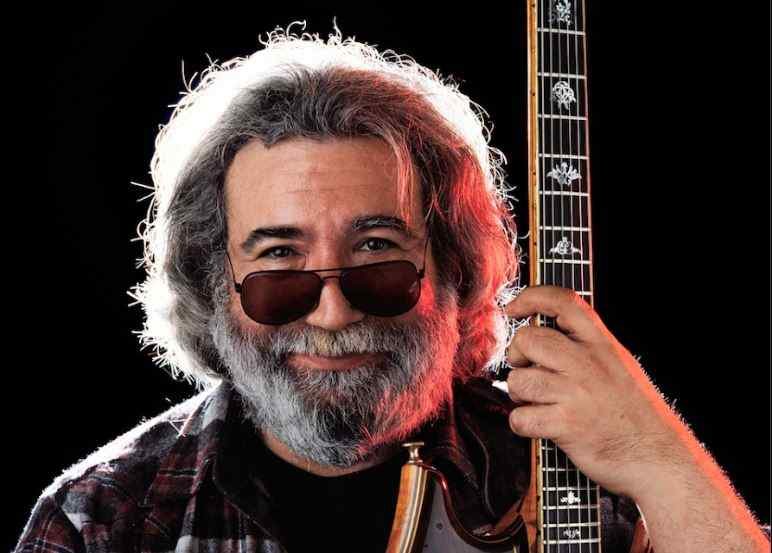Jerome John Garcia, widely known as Jerry Garcia, was born on August 1, 1942, in San Francisco, California, into a family with a rich musical background.
His father, Jose “Joe” Garcia, was a Spanish immigrant and a jazz clarinetist, while his mother, Ruth Marie “Bobbie” Garcia, had a love for music and worked as a nurse.
Tragedy struck early in Jerry’s life when, at the age of five, he lost his father in a drowning accident. This event profoundly affected young Jerry and shaped much of his later life.
Garcia’s musical journey began early; he was exposed to a variety of music styles, including jazz, bluegrass, and country.
By the age of 15, Jerry had begun playing the guitar, heavily influenced by rock and roll, as well as rhythm and blues. His early years were marked by his love for American roots music, particularly bluegrass, which remained a significant influence throughout his career.
READ ALSO: Ramble On Rose Lyrics
The Formation of The Grateful Dead
In 1965, Jerry Garcia co-founded the Grateful Dead, a band that would go on to become one of the most iconic and influential musical groups of the 20th century.
The band initially started as the Warlocks, but after discovering that another band had the same name, they chose “Grateful Dead” from a dictionary entry.
The Grateful Dead was composed of Garcia on lead guitar and vocals, Bob Weir on rhythm guitar, Phil Lesh on bass, Bill Kreutzmann on drums, and Ron “Pigpen” McKernan on keyboards.
The Grateful Dead’s music was a unique blend of rock, folk, bluegrass, blues, and psychedelic rock. Their improvisational style, particularly in live performances, earned them a devoted following known as “Deadheads.”
Garcia’s guitar work and vocals became central to the band’s sound, and his leadership was pivotal in guiding the group through decades of success.
The Haight-Ashbury Era and Counterculture Icon
The Grateful Dead emerged during the 1960s counterculture movement, particularly in San Francisco’s Haight-Ashbury district, which was the epicenter of the hippie movement. \
The band became synonymous with the era’s ideals of peace, love, and communal living. Their music provided the soundtrack to the Summer of Love in 1967, and their free-spirited approach to life and music made them icons of the counterculture.
Garcia, with his distinct appearance—complete with long hair, a bushy beard, and ever-present glasses—became a symbol of the era.
Despite his reluctance to be seen as a leader of the counterculture, his influence on the movement was undeniable. Garcia and the Grateful Dead embodied the ethos of freedom and artistic expression that defined the 1960s.
Challenges and Triumphs
The 1970s and 1980s brought both challenges and triumphs for Jerry Garcia. The Grateful Dead continued to grow in popularity, but Garcia’s personal life was marked by struggles with drug addiction.
His use of heroin and cocaine, which began in the late 1960s, took a toll on his health and creativity. Despite these challenges, Garcia remained a prolific musician, both with the Grateful Dead and through various side projects.
In 1986, Garcia fell into a diabetic coma, which nearly ended his life. Miraculously, he recovered and returned to music, revitalizing his commitment to the Grateful Dead.
The band’s success continued into the 1980s and 1990s, with the 1987 album In the Dark and the single “Touch of Grey” bringing the Grateful Dead to a new generation of fans.
Legacy and Influence
Jerry Garcia’s influence on music extends far beyond his work with the Grateful Dead. He was a versatile musician, known for his work in various genres, including bluegrass, folk, and jazz.
Garcia collaborated with numerous artists, including Merl Saunders, David Grisman, and the band New Riders of the Purple Sage. His work with Grisman, in particular, highlighted his love for acoustic music and showcased his skills as a mandolin player.
Garcia’s legacy is also evident in the enduring popularity of the Grateful Dead. The band’s extensive live recordings and bootlegs have continued to attract new listeners long after Garcia’s death.
The Grateful Dead’s influence can be seen in the jam band scene, with bands like Phish and Widespread Panic drawing inspiration from the Dead’s improvisational style and dedicated fan base.
Death and Posthumous Recognition
Jerry Garcia passed away on August 9, 1995, at the age of 53, due to a heart attack. His death marked the end of an era, but his legacy lived on through the music of the Grateful Dead and the countless musicians he inspired.
Garcia was posthumously inducted into the Rock and Roll Hall of Fame with the Grateful Dead in 1994, and his influence continues to be celebrated through various tributes, festivals, and cover bands.
Garcia’s contribution to music and culture remains significant. His approach to music—characterized by experimentation, improvisation, and a deep connection with his audience—has left an indelible mark on American music.
Jerry Garcia’s legacy is one of innovation, creativity, and a relentless pursuit of artistic expression, making him one of the most beloved and influential musicians of his generation.

